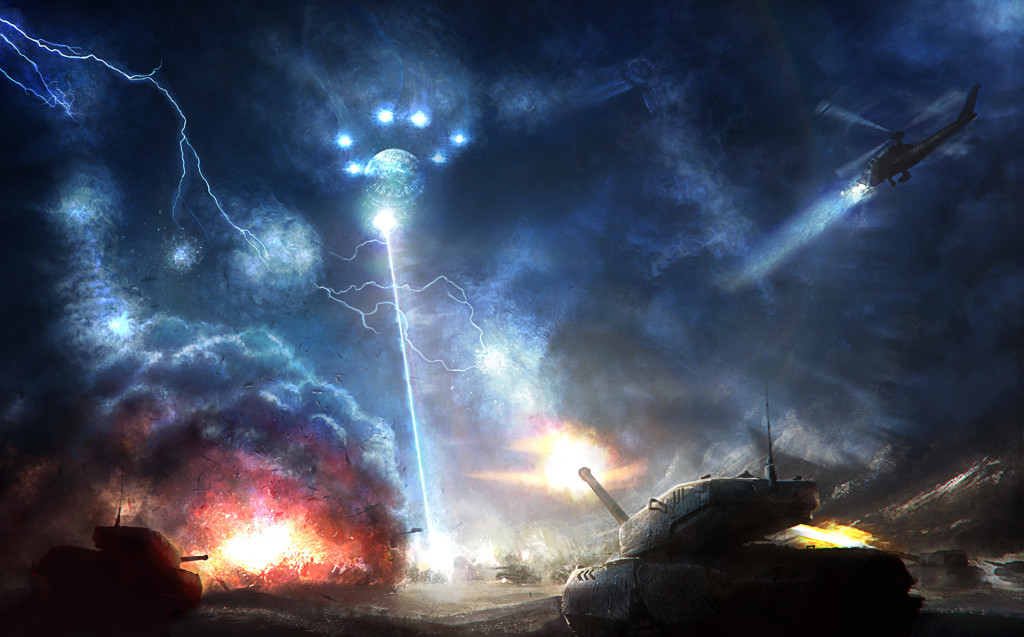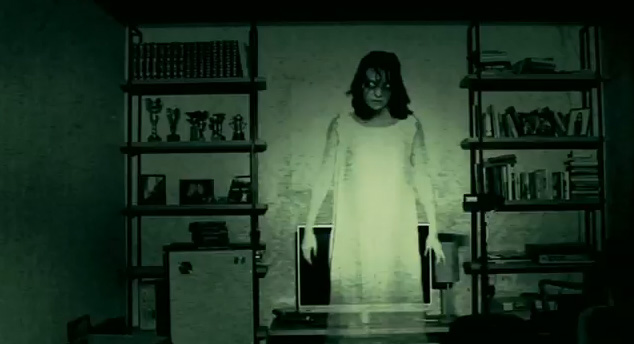Genre: Western
Premise: A sheriff and a slave must team up to rescue a politician’s daughter, who’s been kidnapped by the slave’s previous owner.
About: This one finished on the 2012 Black List. The writers of the script, Russell Sommer and Dan Frey, used the buzz from the placement to sell a Chronicle-like pitch to Paramount soon afterwards, but in the time since, still haven’t written a breakout project.
Writers: Dan Frey & Russell Sommer
Details: 108 pages
Assuming you haven’t given up on screenwriting to become a full-time professional Pokemon Go player, and assuming you’re not down in line at your local cineplex trying to get front row seats to Friday’s Ghostbusters premiere, and assuming you’re not still reeling from Jim John going home on last night’s The Bachelorette episode, then it’s time to get your screenplay review on.
A little background on why I chose to review this. It’s got the perfect setup for a conflict-heavy adventure. A slave has to team up with a white sheriff to rescue a kidnapped woman. Now this isn’t the first time I’ve heard this idea or ideas like it. I know of a couple of other slave-sheriff team-ups as well as a few Jew-Nazi team-ups.
And for whatever reason, despite the red-hot conflict being seared into the premise, nobody’s ever made it work. It’s almost like the setup is TOO good. Like when the U.S. took all their best basketball players to the Olympics that one year and they didn’t win the gold. The team was literally too good to be true.
Is that a real thing? Is it possible for a concept to be too good? I don’t know. But maybe today’s review, along with a few Pokemon Go catches, can shed some light on the mystery.
Bleeding Kansas starts off with slave, Judah, killing one of his masters, then grabbing his wife, also a slave, and making a run for it. He escapes but she, unfortunately, does not. Five years later, we see a battle-hardened Judah robbing stage-coaches for a living. When he saves up enough gold bars, he plans to buy a mustang ranch. Judah REALLY LIKES horses. Like even more than The Bachelorette contestants in last night’s creepy almost horse-sex scene.
Meanwhile, politician Charles Robinson is trying to win the Kansas election so he can finally free all the slaves in the state, but is up against bully incumbent, Governor Sherman. When Robinson gains momentum in the polls, Sherman hires a slaver, David Atchison, to kidnap Robinson’s daughter, KC, until the election is over, figuring it will force Robinson to drop out.
But Robinson doesn’t drop out. He gets Sheriff Colin Schumacher to find his daughter. Meanwhile, Judah finally gets caught stealing and is scheduled to be hanged. But when it’s revealed that Atchison used to be Judah’s master, Colin realizes Judah might be able to help him get KC back. So he reluctantly teams up with Judah and Judah’s girlfriend-horse to right this wrong.
After finishing Bleeding Kansas, I flopped my arms out to my sides and made a noise like, “Humph.” To me, this is the worst kind of script there is. No, it’s not a bad script. Bad scripts can actually be entertaining. But a “humph” script. Everything is competently written. The script even takes a few chances. But there wasn’t a single element that rose to the level of “Holy shit.” And when you’re writing subject matter that’s this dark, you need some Holy Shit moments.
I’ll give you a couple of examples. Bone Tomahawk, another Western. Google the Bone Tomahawk torture scene. It’s the most brutal thing maybe ever put on film.
Or I’ve been catching up on Mr. Robot lately. There’s a scene where our villain CEO character goes downtown, finds this barely-able-to-stand 60 year old homeless man, and we watch as they negotiate a price. We don’t know what they’re negotiating for yet. Finally, the dejected homeless man agrees to 300 dollars, and after he pockets it, our CEO character casually puts a pair of rubber gloves on, and proceeds to beat the shit out of this guy. It’s such a disturbing scene. But the point is, it affects you. It jolts you. It lets you know that you are not safe in this universe. And I felt too safe in Bleeding Kansas.
I don’t need you to blast through the ceiling of expectation in a movie like Crazy, Stupid, Love. But if you’re going to take me into the world of slavery – or any dark subject matter for that matter – I have to see some things that shock me. I have to feel UNSAFE!
That’s not to say this was some by-the-books screenplay. In fact, Frey and Sommer made an interesting structural choice. Instead of placing the invasion on the kidnapper’s farm at the climax, it became the midpoint. And then the team is chased back through hostile terrain on the way back home.
I applauded that choice because it was unexpected. But a choice like that doesn’t come without its drawbacks. When you take something that contains all the power of a climax and you place it at the midpoint, you’re releasing a ton of air out of your screenplay despite being miles away from your finish line. And the challenge becomes, how do you build that back up?
I mean imagine if they had destroyed the Death Star at the midpoint of Star Wars and the rest of the movie was the Empire chasing them back to their home planet. Would that have been a good movie? Maybe. Would it have worked as well as the current film? No way.
Another problem with Bleeding Kansas is you can’t read it and not think of how infinitely better Tarantino’s version was with Django Unchained. If you want to see just how good Tarantino is, compare his films to anything similar. His writing is so heads and tails better on every level, it’s more terrifying than horse-love. And as I was trying to think of a specific example that would show exactly what I mean, the answer came immediately.
The main relationship.
In Bleeding Kansas, the main relationship (Colin and Judah) is very straightforward, in-your-face, and on the nose. A black slave teams up with a racist white sheriff. They hate everything about each other and what the other stands for. Then look at Django Unchained, which could’ve taken a similar route. Instead, Django is teamed up with white German man who isn’t the least bit racist.
WHAAAAT? Screenplay teachers would’ve blown you up had you come to them with that outline. “But there has to be clear conflict!” they’d say. “Why wouldn’t you make Dr. King Schultz a southern racist hate-mongerer! You’d get so much more out of the relationship that way.” Well, Tarantino would counter, because that’s what everyone would expect! And while you may lose that conflict, you gain audience curiosity. They’re not used to this kind of team-up, so they want to know more.
To that end, my big takeaway is that sometimes a setup is too good to be true. If it’s too obvious, there may not be anything to explore. That’s not to say it can’t work. Conflict is still a good thing. But make sure you’re asking the question: Can I execute this in a way that isn’t obvious?
[ ] What the hell did I just read?
[x] wasn’t for me
[ ] worth the read
[ ] impressive
[ ] genius
What I learned: When you tackle fucked up subject matters, be prepared to go in fucked up directions, or risk a disappointed audience.
The writer of today’s script does something I’ve NEVER SEEN BEFORE in all my script-reading. Read on to find out what it is!
Genre: Sci-fi
Premise: When a blitzkrieg-style alien invasion occurs during a couple’s divorce proceeding, they must run back home by foot to save their children.
About: This is the hot spec of the moment, picked up by Spielberg’s Amblin shingle in what I think is a renewed dedication to finding projects that capture the wonder that Amblin used to be famous for. This is writer Pete Bridges’ first sale!
Writer: Pete Bridges
Details: 107 pages – undated
No less than three days ago, I called a writer out for some suspect choices on his title page that painted him as an amateur. So what am I to make of today’s script, where we not only get a map of the route our main characters take during the movie, but a Google Maps link that notes every single beat of the screenplay? For example, we get a marker for the “All is Lost” moment.
Now may be a good time to remind everyone that when I say, “Don’t do this!” think of it more as a suggestion than a rule. Because while I stand by my belief that doing out-of-the-ordinary things with your script (Huge titles in unique fonts, pictures, taglines, etc.) has more of a potential for disaster than success, none of it really matters as long as the writing is good.
Is The Fall good?
Megan and Sam Girard have just finished getting their divorce finalized in downtown Atlanta. It’s an odd moment. It’s not like these two hate each other. They have two beautiful children back in the suburbs. They seem to have a lot in common. They even consider grabbing a coffee before calling it a day!
As they work through this oddness, a plane falls out of the sky. And then another plane. And another. And everything turns off. Phones, cars, elevators. What’s going on? An EMP bomb? A solar flare?
Try aliens.
Before the two can say “E.T.,” a bunch of alien bombers swoop down and drop these magnetic blue balls that paralyze everyone nearby. It’s around this moment that the divorced duo realize: We gotta get home and save our kids. So they start running.
It doesn’t help that Megan is diabetic and getting ever closer to a diabetic seizure. They need to find her some insulin fast. And since everything – especially pharmacies – are being looted, that ain’t going to be easy.
As they make their way through the city, they discover more and more about these aliens, such as their on-the-ground soldiers, 7 foot tall alien thingeys called Slims, which move to the paralyzed people, zip them open, torture them, then take their insides. Yeah, not a fun way to die.
And with new alien ships coming in to suck up all the humans that remain, it’s looking less and less likely that they’re going to get out of this alive. But with the strongest motivator in the world pushing them (the desire to save their children), our duo achieves the impossible, making it past the majority of the chaos. But will they make it to the finish line? Not if the Slims have something to say about it.
So is The Fall good? Let me answer that question this way. It’s very tuned into the spec process. We have a light spin on a common setup (an alien invasion, but told in a single shot). We have tons of urgency. We have a clear goal with high stakes. We have an “event” like setup. This script bleeds GSU.
On top of this, Bridges makes a ballsy choice that I’ve NEVER seen before. There isn’t a single sentence outside of the dialogue that’s over a line long. Everything is one line! I don’t know if I love that idea but I sure as hell respect the dedication required to achieve it.
But let’s get down to the nitty-gritty and why these scripts are so hard to write. Anything that moves really fast is difficult to mine emotion from. You don’t have time to delve into your characters. Sure, you can have your occasional quiet moment where your characters hide out, catch their breath, and remember an incident from their past that helps us connect with them.
But it’s not the same as when you have real time passing. That’s the reason that “Allied,” the WW2 script I reviewed in my last newsletter, got into my Top 25. I felt like I spent a ton of time with those characters because I did. 2 in-script years passed before the second half of the screenplay, where everything was contained to 3 days.
Had we started the film as those 3 days had begun, it wouldn’t have left any emotional impact on us. Who cares if these two betrayed each other if we didn’t know them?
Ultra-urgent setups leave the writer in a tricky situation where they’re required to build emotion into these tiny little pockets where characters remember “emotional” things from their past. And while it’s better than nothing, it’s still hard to care since we weren’t there when any of these things happened. We’re only hearing about it in retrospect.
The best way to create emotion in fast-paced stories is 3-fold. You do it through:
Action.
Choice.
Interaction.
With action, you look at someone like Han Solo. His repeated ACTION throughout Star Wars is one of selfishness. He always acts selfish. Then in the end, he saves the day by acting selfless. Note that Han Solo never tells us about how his dad left him when he was four. That kind of thing doesn’t matter to most people, unless the story the character is telling is earth-shatteringly compelling. And it’s really hard to do that. The emotion comes from the actions he takes connected to his flaw.
With choice, I’ll give you an example from one of last year’s best movies, Inside Out (another script that takes place inside a very short time frame). The most emotional moment in that film occurs when Joy and Riley’s imaginary friend, Bing Bong, are trying to make it out of a deep cavern by riding a rocket up its side. They keep trying and keep trying and can’t seem to get enough power to reach the top. At that point, Bing Bong realizes that his extra weight is preventing the rocket from getting them all the way up. So he makes the CHOICE to stay behind. Joy makes it up on the next turn, but we’re devastated because Bing Bong is now gone forever. Choice creates emotion.
With interaction, you’re creating emotion through a desire to resolve character conflict. You have two people who don’t see eye to eye on something, yet they have to work together to achieve a common goal. If you’ve done your job and we want to see these characters resolve their issue, we will feel an emotional connection to them and their journey.
Of the three, this is the one The Fall executes best. It never goes overboard with Sam and Megan. But there are still things they never hashed out in their marriage. And we see a few of those things pop up as they make their way home. Was it perfect? No. But it was the right idea and the execution was solid.
I liked The Fall. It wasn’t perfect. It did borrow a lot from War of the Worlds. But it moved, it was entertaining, and you could see the movie in your head.
[ ] What the hell did I just read?
[ ] wasn’t for me
[x] worth the read
[ ] impressive
[ ] genius
What I learned: In the immortal words of Bonnie Raitt: “Let’s give them something to worry about.” Have you ever gone out to enjoy your day but in the back of your head, you couldn’t stop worrying about that one thing? Maybe you didn’t know how you were going to pay this month’s rent. Maybe your sister was having a big surgery tomorrow and you didn’t know how it was going to go. While this may suck in real life, this is EXACTLY what you want to make your reader experience in a screenplay. Instead of ONLY focusing on the goal at hand (get home to the kids), you want to have your characters (and by extension, the reader) worried about something in the meantime. Here, it’s Megan’s diabetes, specifically, where are they going to find her some insulin? This creates a sense of anxiety in the reader that keeps them invested. They will not be able to put your script down until your character solves that problem. So that’s today’s tip. Keep your reader worried!
Genre: Horror
Premise: Soon after moving into their new apartment, a young couple’s idyllic life begins to unravel in the most horrific ways due to the presence of a malevolent spirit.
Why you should read (from writer): I’ve been making a living as a screenwriter here in Mumbai for the last five years, before which I studied film in Los Angeles, and even worked on a few movies as a production assistant.
I’m a horror film connoisseur, and someone who swears by the holy trinity of horror cinema: “The Exorcist,” “The Shining,” and “Alien.” Although horror is my genre of choice, I’ve also secured paid gigs writing a crime-thriller, and a Hitchcockian suspense-thriller.
Following months of depression after failing to get my first horror screenplay produced, I went about writing a story which was far more contained, thereby cheaper to produce, and thus “Ghost Story” was born. “Ghost Story” is a slow burn horror-thriller in the vein of “The Shining” and “Paranormal Activity,” but without the latter’s found footage aesthetic. What sets “Ghost Story” apart is its matter-of-fact approach in presenting supernatural events in a real and believable way. Imagine “Insidious,” but with the real world aesthetics of “The Lunchbox.” It felt great when “Ghost Story” made the quarter-finals in Screencraft’s 2015 Horror Screenplay Contest.
For the past year, I’ve been paying the bills developing concepts — two action-thrillers, and one superhero-urban fantasy — for a local production company.
I’d sincerely appreciate your feedback on “Ghost Story” — not to mention feedback from the rest of the ScriptShadow community as well — because really I want to make it better. So fingers crossed, hoping this query email piques your interest!
Writer: Sarmad Khan
Details: 102 pages
Wow, so we got some interesting stuff to discuss today. We’ve got “quarter-finalist” of a screenwriting competition written on the title page. We’ve got a blueprint of the apartment the story takes place in on the first page. And we have a movie tagline (“Some secrets won’t stay buried.”).
If I’m being 100% honest? These are the kinds of things that get you tabbed as an amateur. They’re big red flags for readers.
Let’s say, for instance, that I received an e-mail from someone who said their script had made the semi-finals of the Nicholl. You know what my first thought is? “Okay, so this person isn’t a total newb. But if their script didn’t even make the top 5, it’s probably got its fair share of issues.”
Like we discussed the other day, even the scripts that win competitions have problems. So if your script didn’t even make the top 50, that’s saying something.
Now there are two sides to this argument. In a sea of competition, anything that proves you know what you’re doing helps. But there’s a certain point where it can work against you, and quarterfinaling or semi-finaling in smaller competitions may be that point. One thing we can all agree on is not to put any contest placement on your title page. Mention it in your query e-mail if you think it will help. But think long and hard about if your personal achievement will be seen as an achievement by professionals.
Moving on to Ghost Story!
36 year-old film editor Varum Desai has just moved into a new apartment in Mumbai with his retired party-girl wife, 27 year-old, Arya. The two seem to have a solid relationship except for a few snags underneath the surface. Arya wants to jump on the baby train immediately. Varum would rather wait until they’re financially ready.
While Varum spends his days in an editing suite, Arya keeps herself busy around the apartment with the help of her maid, who has an 18 month-old daughter. Almost immediately after moving in, Arya starts observing strange things. Cabinets being left open. Noises coming from the next room. At one point while napping, her phone mysteriously makes 13 calls to her husband.
Arya’s able to confide to fellow party-girl bestie, Kat, that something is up. But she’s afraid to tell her husband lest he thinks she’s crazy. That is until she finds the maid’s baby dead inside a running laundry machine. The cops blame the maid, but Arya’s fed up. She’s convinced this is an evil spirit.
So she heads over to the University of Mumbai and begs a local professor who specializes in spirits to come look at her apartment. The professor is skeptical, but eventually relents. Will she confirm that a ghost haunts the apartment? Or could their situation be a lot worse?
I actually e-mailed Sarmad ahead of posting this and told him my big worry – that everything here felt too generic. The logline – “Soon after moving into their new apartment, a young couple’s idyllic life begins to unravel in the most horrific ways due to the presence of a malevolent spirit” sounds like every haunted house movie ever. The tagline: “Some secrets won’t stay buried” may have literally been used on over 200 posters throughout time. Even the title is the most generic title you could possibly imagine:
“GHOST STORY”
So why did I put it in Amateur Offerings? Because Sarmad’s query was the most professional of anyone submitting a screenplay in the past three months. He may not have had the most original concept. But his writing was smooth, concise, clear, and made you want to believe in him. My hope was that THAT side of Sarmad would override the generic side. Did it?
Not for the first 60 pages it didn’t. I mean, we went through about every horror cliche we could possibly go through. Open cabinets? Noises in other rooms? Guys, when you’re writing in any genre, you have to find new ways to explore old ideas. You have to find new ways to make things go bump in the night. Otherwise you’re going to put us to sleep.
But then Ghost Story pulled off a hail mary. Once we start investigating WHY the haunting was happening, the story got a lot better. Whereas before, each scene felt like plug and play, now we were learning about an extremely unique backstory where Varum’s brother killed a little girl when they were kids, and that girl had become the ghost.
I couldn’t believe that in a script where 30 pages ago, I was wondering if it would beat the jump-scare record, I was now reading a carefully crafted character piece about a marriage that was on the rocks.
It’s so clear to me why this only made the quarter-finals. Those first 60 pages are a struggle. In fact, I would go so far as to say some readers never made it past page 60. They acknowledged that the writing was good, and that was enough to get the script through. Which is why I warn writers against the slow burn. If your script doesn’t start cooking til the halfway point, expect most readers to bail before they get there.
Regardless of what you thought of the first half of Ghost Story, the most important thing here is that this CAN BE A MOVIE. And 90% of the scripts I review on Amateur Friday can never become movies, no matter how much work the writer puts into them. This can.
But Sarmad needs to rethink those first 60 pages. He has to throw out every single scare he’s written and replace it with something better. He then needs to integrate the kind of character work and intrigue that he achieves in the last 40 pages in the first 60. More needs to be going on here than a woman wandering from room to room. Because that’s what I would’ve titled this script if I’d only read 60 pages of it: “Woman Walks From Room to Room.”
You might want to bring another character in to add some intrigue. Shit, I thought bringing the dangerous brother, Vikram, in would’ve spiked that whole section. Create a “ghost story” version of “Sex, Lies, and Videotape.” No worries if that complicates your story too much. The point is, MORE needs to happen in the first half, and MORE ORIGINAL scary shit needs to happen in the first half.
This script has serious potential despite its weaknesses, and because of that, I think it’s worth the read.
Script link: Ghost Story
[ ] What the hell did I just read?
[ ] wasn’t for me
[x] worth the read
[ ] impressive
[ ] genius
What I learned: This script is proof-positive that when you delve into the characters (the histories, the cracks in relationships, the inner flaws, the secrets, the denial), scripts get better. It’s a tale of two halves here. The first half is completely superficial, where it’s all about ghosts and jump scares. Boring. The second half is about a dark ass history with these characters and how that’s gotten them into this mess. And yes, I know that you can’t unload all of your character shit right away. But you have to unload SOME of it. You have to hint at SOME of it. I didn’t even know these two were interesting people until page 60, when they started talking about what was really going on. Don’t make that mistake!
If you’re new to the Scriptshadow Script Challenge, here are all the previous posts…
WEEK 0
WEEK 1
WEEK 2
WEEK 3
WEEK 4
WEEK 5
WEEK 6
WEEK 7
WEEK 8
WEEK 9
Okay, this past week was all about identifying the main problems in your screenplay, coming up with solutions, then placing those solutions into your SECOND DRAFT OUTLINE.
For example, if one of your big problems was that your hero was boring, part of the solution may have been to give him a more powerful opening scene. Therefore you’d go into your second draft outline, find your hero’s opening scene (let’s say it was the second scene in the script) and write in a detailed synopsis of the scene you planned to write.
You’d then do that for every problem and solution. Some of these solutions may have required changing one scene. Some of them may have required changing entire sequences. And some of them may have meant changing multiple scenes across three acts.
The reason you outline all of this ahead of time is so you can a) see how the script looks zoomed out. And b) do all the dirty work of placing everything where it needs to go so you can make the changes linearly when you go to write the draft.
And that’s the plan here. You’ve got your 2nd Draft Outline all laid out. All you have to do is go down the list, from Scene 1 to Scene 60, and replace the scenes that you decided to change in the problem-solving process.
Now some people don’t like to be this organized. Their approach is more general. They have some ideas on what changes they need to make. They may even write them down in a document. This is perfectly acceptable. But I’ve found that the less organized you are going into a rewrite, the harder it is to wrestle the rewrite into shape.
And rewriting is one of the hardest things there is to do. Cause unlike first drafts, where you’re writing in a somewhat linear manner, rewrites require more bouncing around. You’ll write a new scene, realize it requires you to change something 60 pages earlier, go back to make the necessary changes in that scene, realize that the secondary character in that scene doesn’t work anymore because of the tonal change, requiring you to go back to your problem-solving document, figure out how to approach that character, and so on and so forth.
So the more you can mitigate that haphazard process, the better.
Simon Kinberg, who runs like five of the biggest franchises in Hollywood at the moment, says that he spends way more time on his outline than he does writing the script. He wants to be confident in the direction of the script before he writes it and he can only do that if he’s mapped out as much of the story as possible ahead of time.
Now before you jump in and start writing, I want to make sure you’ve got the proper rewrite mindset. The biggest problem with first drafts is that they’re messy. They don’t make a lot of sense. So in addition to fixing all these problems, you’re going to want to clean the script up as much as you can. You won’t be able to do it all in one draft. But you definitely want everything as cohesive as you can make it. To achieve this, you’ll be doing three things.
SIMPLIFYING
STREAMLINING
FOCUSING
Simplify – One of the biggest mistakes screenwriters make is overcomplicating their plot. Movies have deceptively simple plots. If something is not moving your plot forward, you’ll want to get rid of it. Whatever your hero or heroes are attempting to do, only write scenes where people are pushing towards that. Simplifying is the difference between the original Hunger Games and Hunger Games 4. In Hunger Games, it was about kids getting ready for and competing in a death match (simple to understand!). In Hunger Games 4, it was about half-a-dozen things, none of which were very clear. Not surprisingly, that over-complication doomed the movie.
Streamline – In rewriting, you need to become a ruthless editor who’s willing to get rid of ANYTHING that doesn’t work. If a character is average and they’re not integral to the story, GET RID OF THEM! If you have a subplot about an investigator who researches where a unique bullet came from and it doesn’t affect your main plot? GET RID OF IT! If you have two characters who are both funny best friends of your main character, consider combining them. Think of each draft as a company. Figure out where all the excess spending is happening and cut it out. I want your second draft to be as lean and mean as possible. 110, AT MOST, pages unless you’re writing an epic period piece.
Focus – Movies are not places to explore a dozen different ideas. They work best when they’re exploring 1 or 2 ideas. These ideas often boil down to your theme and your main character’s flaw. And in most cases, those two things will be the same. So if your main character’s flaw is that she doesn’t believe in herself. Focus a lot of her scenes on exploring that flaw. If your theme is “Seize the day,” ask yourself if the scene you’re writing explores that theme (whether it be in a positive or negative way). A lot of scripts go south when the writer starts following every thought that pops into their head, regardless if Thought A and Thought B are natural extensions of each other. I remember an amateur script I read once where the female hero was an airline stewardess mired in an airline strike and also the story of her as an up-and-coming MMA fighter. There was no thematic overlap between these storylines on any level and when I asked her what she was thinking when she wrote it, she said, simply, she was inspired by Tarantino movies. Needless to say, this approach leads to hacky scripts that become unfocused and never recover.
So, you’re going to move quickly here. Every week, you’re going to be covering 25-30 pages. Now all of those pages won’t need to be rewritten. You may only need to rewrite three scenes in a particular act. So don’t freak out. But if we’re going to finish a second draft in a month, we need to get through a quarter of the script each week.
Rewrite Goal (Week 10): End of first act! (pages 25-30)
Genre: Comedy
Premise: On the cusp of gaining independence from the British, George Washington, Ben Franklin, and Thomas Jefferson lose the only draft of the Declaration of Independence in the world, putting the future of the United States in doubt.
About: A script about our founding fathers. I’m a couple of days late on this. But what creed do us Americans live by? BETTER LATE THAN NEVER! Yeah! Murica!! Actually, if these guys were smart, they’d change the title to “Murica,” and run away with a sale. United States of Fuckin’ Awesome is one of the few comedy scripts to have won the Nicholl Fellowship, which it accomplished in 2014.
Writers: Alisha Brophy & Scott Miles
Details: 98 pages
Screenwriting contests are funny. And I’m not excluding my own experiences running them from this observation. They’re basically competitions for writers who don’t really know what they’re doing yet. Therefore, the person who wins has rarely written the perfect screenplay. They’ve written something that has wonderful moments mixed with amateurish moments, with the determining factor being there’s more good than bad.
This can be frustrating for losing contestants who then read the scripts, as they expect them to be amazing. When they aren’t, they immediately focus on the fact that their screenplays aren’t amazing either. So why did THAT imperfect screenplay beat out THEIR imperfect screenplay?
Often, these writers are using the principle of Everything That’s Not Amazing Is The Same. And this couldn’t be less true. Whereas the winning script may have nailed important screenwriting elements such as concept and character, the losing writer may not even grasp the basics, like how to get into a scene late and get out of it early. Or how to use every scene to push the story forward.
Of course, the real problem is that they don’t know these things yet because nobody who knows anything has ever read their script, sat down, and explained these problems to them. If you’re unaware that you’re doing anything wrong, you’re going to think your script deserves to win every contest it enters.
And this is another misconception that people who don’t understand screenwriting have. That storytelling is this subjective thing. Like the only reason “The Killer Eagle” beat out “Recon Assassin” is because the reader loves eagles or something. That’s not true. There are storytelling basics you need to incorporate just to GET to the point where you’re being judged subjectively. And most aspiring screenwriters have been at this for so little time, they haven’t learned these things yet.
So when their third ever script doesn’t ellicit oohs and ahs, they convince themselves that it’s because the world of art is “subjective” and people just aren’t “getting” their script. You wanna know what smart screenwriters do? They figure out why their story isn’t landing, and improve on the things they have control over.
I can tell you right now that United States of Fuckin’ Awesome achieved in its first five pages something that 99% of aspiring screenwriters have no idea even exists. Irony. We talk about “red flags” on this site a lot. A reader is constantly red-flagging rookie mistakes to clue them in on if this writer knows their shit. But we don’t ever talk about GREEN FLAGS – ways you can tell a screenwriter knows what he’s doing. And irony is a big green flag.
Seeing several of history’s most iconic figures introduced banging whores, whining like cowards, and swearing like sailors, plays against our expectations and intrigues us. That’s a green flag.
Speaking of flags, it’s July 3rd, 1776, and we’re about to watch the story that the history books never told us. Ben Franklin, who it turns out is a borderline moron with an addiction to whores, has teamed up with Thomas Jefferson, the country’s biggest nerd, to finish the most important document in history, The Declaration of Independence.
They grab their good buddy, George Washington, obsessed with reclaiming the party lifestyle that defined his youth, to celebrate at a local pub. Unfortunately, the group get really trashed, and after Franklin heads to a whore house, wakes up to discover that his whore, Claire, has stolen the document!
This is not good, since Jefferson included every single name in the document who would be running America. This would act as a de facto assassination list if this got into the redcoats’ hands! So off the three go, Hangover-style, in search of the elusive document.
Along the way they run into Jefferson’s boss, Sam Adams, the biggest asshole in the world, Benedict Arnold, the nerd who’s only ever wanted to sit at the cool kids’ table, and Andrew Jackson, a bully of a man who only cares about kicking ass, specifically the nerdy ass of Jefferson.
The chase takes them all over town, only for them to realize Claire is at the biggest redcoat party of the year! Our trio will need to secure a canoe, paddle across the river while wasted, and infiltrate the party to get that Declaration! Cause if they don’t? We’ll never declare “Murica!”
Even though United States of Murica borrows liberally from The Hangover, it’s still a well-constructed screenplay that moves quickly. I liked the McGuffin (the lost Declaration of Independence), but what I liked more were the consequences of not getting the McGuffin. The British would have a Kill List which would allow them to destabilize the already shaky colonies and win the war. The stakes were high!
My main issue with the script is that, from there, it went on cruise control. This happens a lot during second acts in comedies. The writers have used most of their jokes up by the early part of the second act, leaving them to repeat story beats.
It takes a lot of work to make a second act great. And one of the challenges is not settling for those repetitive story beats. You have to sit down and do the dirty work of saying, “There are too many sequences like the one I just wrote. I need to come up with something better.” Newer writers and lazy writers never do this. And their second acts suffer for it.
But I’ll tell you where this script eventually won me over.
The climax.
One of the tried-and-true ways of writing a good ending is sending your heroes into the belly of the beast. In general, you want to look for scenarios that are conflict-heavy and do the bulk of the writing for you. When you send your heroes into the villain’s den (Silence of the Lambs anybody?), a lot of those scenes will write themselves.
I’m sure everyone reading this review can think of half-a-dozen funny scenes born from disguising our heroes as redcoats and forcing them to infiltrate a giant redcoat party. And those are the scenarios you’re always searching for as a writer – the ones where scene ideas pop up without you having to think.
United States of Fuckin’ Awesome does operate on a gimmicky premise. And the founding fathers swearing nonstop definitely gets old after awhile. But the writers add just enough creative and funny ideas to keep the script entertaining. It’s worth a read if you’re a comedy writer for sure, especially one who plans to enter the Nicholl.
[ ] What the hell did I just read?
[ ] wasn’t for me
[x] worth the read
[ ] impressive
[ ] genius
What I learned: Identifying milkable scenes. There’s a great setup here at the redcoat party where Washington, disguised as a redcoat, comes upon a group of British soldiers who are making fun of, you guessed it, George Washington. Washington must sit and endure this, and at the end, one of the soldiers looks at him and asks, “Enoying the party?” And that’s the scene. This so could’ve been a show-stopper scene had the writers identified it as milkable. Washington should’ve been forced to get in a full-blown conversation with the redcoats, to the extent where he’s using a terrible fake English accent. He should’ve been encouraged to tell his best “Washington is a loser” joke. There’s so much more that could’ve been done here that was missed. When you got those scenes staring you in the face guys, make sure you take advantage of them!









